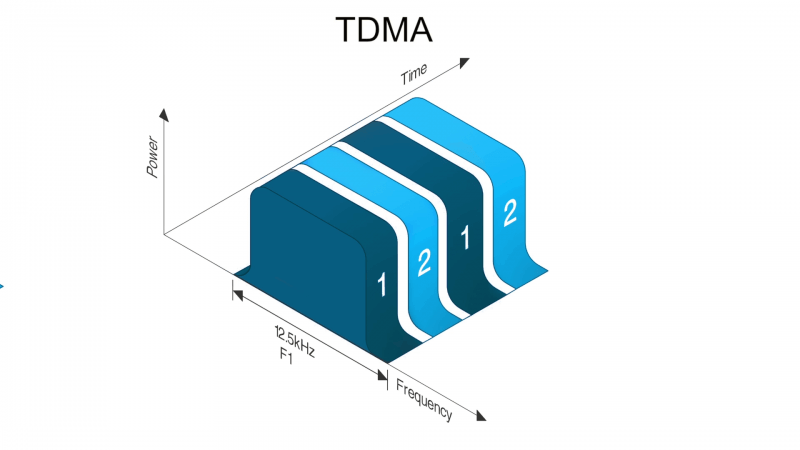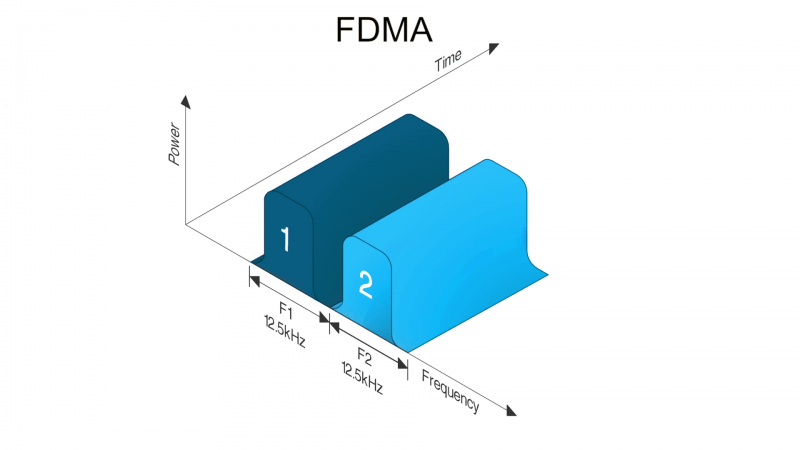Basic Radio Awareness
Modulation and Radio Building Blocks
The difference between FDMA and TDMA
An RF channel occupies a certain amount of radio spectrum. What is the most efficient use of this small chunk of radio spectrum that makes up our channel?
There are two different techniques.
The first technique is called frequency division multiple access (FDMA). This method separates channels by frequency, so if users want to have two channels they’ll have two separate frequencies. If a conversation runs across a channel, it occupies the whole of the channel exclusively. There is only one conversation and one user at a time per radio channel. More radio channels require more frequencies.
There is an alternative technique: Time division multiple access (TDMA).
TDMA occupies a channel but it allows two users to occupy the same channel at what appears to them to be the same time. An analogy could be the still shot frame rates in cinema, where at around 30 frames per second it gives the illusion of continuous movement but it is actually a time shuttling exercise.
With a 2-time slot TDMA system, two users can share the same frequency in the following manner: User 1 gets to use the frequency for a very short fixed period of time, perhaps 50 milliseconds. Then the channel reverts to user 2 who gets 50 milliseconds. Then it cycles again back to user one who gets a further 50 milliseconds, and so on and so forth.

This process is so fast that each user thinks they have exclusive use of the frequency channel. With 2-time slot TDMA, in order to have more than two conversations going on at the same time then another radio channel is needed. If it is another 2-time slot TDMA channel then two frequencies can simultaneously support four conversations; or apparently simultaneously, because of this shuttling exercise.
 Radio Academy
Radio Academy






